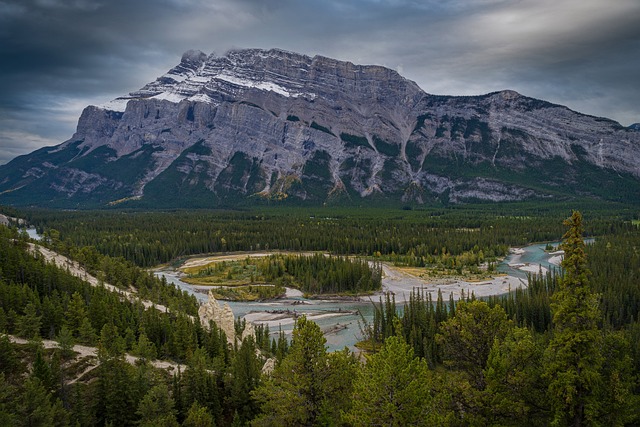Exploring the beauty of national parks is an exhilarating experience, offering a chance to connect with nature and escape the hustle and bustle of daily life. However, the vastness and unfamiliar terrain can make it easy to lose your way. Here are some essential tips to help you avoid getting lost in national parks and ensure a safe and enjoyable adventure.
Plan Ahead and Prepare
Research Your Destination
Before heading out, take the time to research the national park you plan to visit. Obtain maps, trail guides, and information about the terrain. Familiarize yourself with the layout, landmarks, and any potential hazards.
Check the Weather
In national parks, the weather can change very quickly. Before you go on your trip, check the weather report and be ready for sudden changes. To stay safe and relaxed, wear layers and bring the right gear.
Inform Others of Your Plans
Always let someone know your itinerary, including your expected route and return time. This way, if you do get lost, help can be alerted promptly.
Use Reliable Navigation Tools

Carry a Detailed Map and Compass
While GPS devices and smartphones are useful, they can fail due to dead batteries or poor signal. Carry a detailed map and a reliable compass, and know how to use them. Practice your navigation skills before your trip.
Use a GPS Device
A handheld GPS device can be a valuable tool, providing real-time location data and route tracking. Ensure it is fully charged and bring extra batteries.
Mark Your Trail
As you hike, use markers such as ribbons, stones, or natural features to help you keep track of your path. This can be especially helpful if you need to retrace your steps.
Stay on Designated Trails
Follow Trail Markers
National parks often have well-marked trails with signs and blazes. Stick to these trails to avoid getting lost and to protect the natural environment.
Avoid Shortcuts
Taking shortcuts can lead you off the trail and into unfamiliar territory. Stay on established paths to ensure you remain oriented and safe.
Stay Aware of Your Surroundings
Note Landmarks
As you hike, take note of prominent landmarks such as mountains, rivers, or distinctive trees. These can help you navigate and find your way back if you become disoriented.
Use the Sun and Stars
The position of the sun during the day and the stars at night can help you determine direction. Learn basic celestial navigation techniques to aid your orientation.
Stay Calm if You Get Lost
Stop and Assess
If you realize you are lost, stop and take a moment to assess your situation. Panicking can lead to poor decision-making. Take deep breaths and gather your thoughts.
Retrace Your Steps
If you believe you have only recently strayed off the trail, try to retrace your steps to your last known location. Look for familiar markers or landmarks.
Stay Put and Signal for Help
If you cannot find your way back, it is often best to stay put and wait for help. Use a whistle, mirror, or brightly colored clothing to signal your location to rescuers.
Conclusion
National parks offer breathtaking landscapes and unforgettable adventures, but they also require careful planning and preparation. By researching your destination, using reliable navigation tools, staying on designated trails, and staying aware of your surroundings, you can avoid getting lost and enjoy a safe and memorable experience. Remember, preparation is key to ensuring your national park adventure is both enjoyable and safe.
FAQ: How to Avoid Getting Lost in National Parks
Q1. Why is it important to plan ahead before visiting a national park?
Planning ahead allows you to familiarize yourself with the park's layout, trails, and potential hazards. It helps ensure you have the necessary information, maps, and gear to stay safe and navigate effectively.
Q2. What navigation tools should I bring to a national park?
You should bring a detailed map, a reliable compass, and a GPS device if possible. While smartphones are useful, they can fail due to battery life or poor signal, so it's essential to have backup tools like a map and compass.
Q3. How can I use landmarks to avoid getting lost?
Take note of prominent landmarks such as mountains, rivers, or distinctive trees as you hike. These natural features can help you maintain your orientation and find your way back if you become disoriented.
Q4. What should I do if I get lost in a national park?
If you get lost, stay calm and assess your situation. Try to retrace your steps to your last known location. If that is not possible, it is often best to stay put and signal for help using a whistle, mirror, or brightly colored clothing.
Q5. How can I prevent getting lost in the first place?
Stay on designated trails, follow trail markers, avoid taking shortcuts, and use reliable navigation tools. Inform others of your itinerary and note significant landmarks as you hike.
Q6. What should I do if the weather changes suddenly?
Check the weather forecast before your trip and be prepared for sudden changes by dressing in layers and packing appropriate gear. If the weather becomes severe, seek shelter and wait until it is safe to continue.
Q7. How can I use the sun and stars for navigation?
During the day, the sun's position can help you figure out which way to go. Use the stars to find your way at night. In the wild, it can be helpful to know how to use the stars to find your way.
Q8. What is the best way to signal for help if I’m lost?
Use a whistle, mirror, or brightly colored clothing to attract attention. A whistle can be heard from a distance, while a mirror can reflect sunlight to signal rescuers. Wearing bright colors makes you more visible.
Q9. Why is it important to inform someone of my hiking plans?
Informing someone of your itinerary ensures that if you do get lost, help can be alerted promptly. Provide details of your planned route and expected return time to a friend, family member, or park ranger.
Q10. Are there any specific apps or devices recommended for navigation in national parks?
While there are many apps and devices available, some popular options include AllTrails for trail maps and information, Garmin GPS devices for reliable navigation, and offline maps apps like Gaia GPS. Always ensure your devices are fully charged and bring extra batteries.



